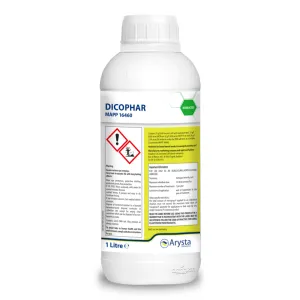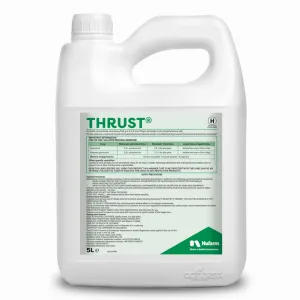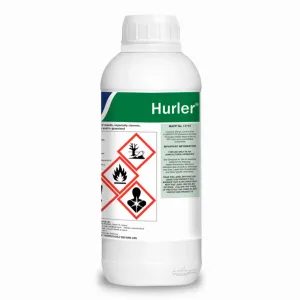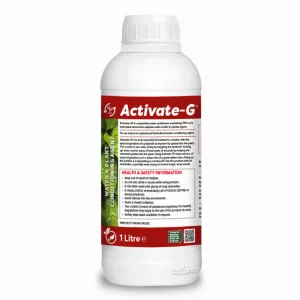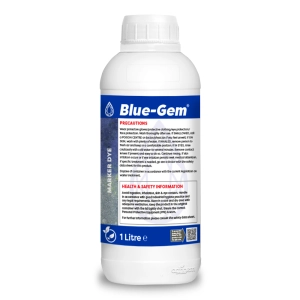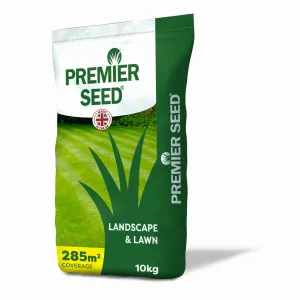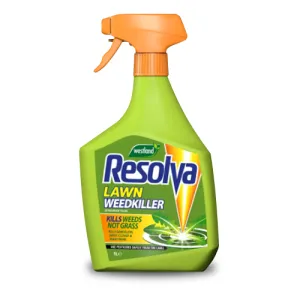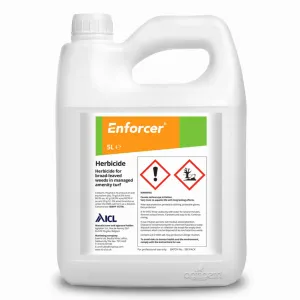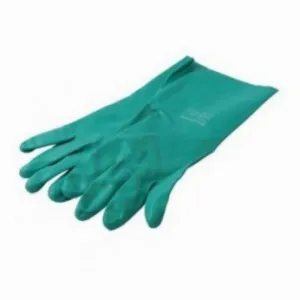Assuming you are trying to kill lawn or paddock weeds and preserve your grass, then you need to make sure you choose a selective weed killer, and not a total weedkiller (also known as non-selective, or broad-spectrum weed killers). Total weed killers will kill all vegetation they come into contact with.
See our full guide to weed killer types here.
Broadleaf Selective Weed Killers for Lawns
Broadleaf Selective weedkillers (also known as broadleaf selective herbicides) target broadleaved weeds in grass (like dandelion, clover, creeping buttercup, speedwell, yarrow and daisy). They do not harm the grass when used correctly.
This type of herbicide only targets ‘dicot’ plants – those that typically have broad leaves.
Grasses are known as ‘monocot’ plants and so they are not affected by the active ingredients in these weed killers. This is due to the differences in their anatomy, metabolism and how they respond to certain chemical compounds.
Monocot plants like grass also have a distinct structural system that plays a role in their ability to remain unaffected by selective herbicides (limiting the herbicide’s ability to be translocated effectively). However, if used incorrectly, selective herbicides can still damage grass, so do make sure you read the label instructions carefully.
There are different types of selective herbicides; phenoxy herbicides (such as Depitox for example) are absorbed through the plant’s foliage where they interfere with the cell formulation resulting in abnormal growth.
Other systemic selective weed killers (like Praxys) kill the weeds by inhibiting certain chemical pathways in the plant.
You can find out more about how these smart herbicides work in our post here.
Selective Weed Killers for Paddocks and Pasture
The same principles apply when dealing with weeds in grass used in paddocks and / or for grazing.
However, you must make sure you follow the specific instructions relating to the return of livestock after treating weeds in pasture. These vary depending on the product you have chosen, so do check carefully.
It is important to note that this livestock withdrawal period is in place to ensure the weeds absorb as much of the herbicide as possible, and that they are not brushed past, trampled on, or eaten by animals. This activity can reduce the efficacy of the herbicide.
Livestock managers often worry that this withdrawal period relates solely to animal welfare. However, under normal conditions and when the herbicide is used correctly, it is impossible for livestock to consume enough treated weeds to cause an adverse effect.
One of our best-selling selective weed killers for paddocks is Thrust. This selective herbicide will also tackle ragwort – a particularly problematic weed commonly found in fields.
When combined with Hurler and Activate G, it will also help tackle other problematic weeds like cudweed.
With all herbicides, if you are unsure of the type you should buy, or how to apply them, always take professional advice.
How to Apply Selective Weed Killer
- Choose the right time. Broadleaved weeds in grass are best treated when they are actively growing. This is usually in spring and autumn. Avoid weather extremes like drought or frost and try and apply your weed killer when there is no rain forecast for the following 24 hours. Do not apply it in windy conditions to avoid spray drift. Always read the label to ensure you can apply the product at the time of year you are planning to use it.
- Prepare your lawn by mowing it a few days before you plan to treat the weeds. This helps to make sure the weeds are not too tall to interfere with application (but should still have enough foliage to absorb the herbicide). Don't mow for 2-3 days after applying.
- For paddock weeds, some products will recommend topping the weeds a few weeks before spraying (don’t do this if the weeds have already gone to seed and wait for fresh active growth before spraying).
- Identify the weeds. This will help ensure you choose the right herbicide for your specific weed problem. All of our selective herbicides detail which weeds they will target. See the individual product descriptions and product labels.
- Remove all livestock before treating weeds in paddocks or pasture. Always follow the label instructions carefully.
- Read the label carefully and follow the correct dilution and application rates. You must also make sure you are wearing sensible PPE to avoid getting herbicide onto your skin.
- Apply the herbicide as evenly as you can to the weeds. Avoid over spraying as this can cause the herbicide to run off and become ineffective. You can use a dye indicator with selective herbicides. This will help you see precisely where you have applied the weed killer meaning you won’t miss a single weed. Dye indicators fade naturally with rain or sunlight.
- Be patient. Selective weed killers can take several weeks to show full results.
- Don’t mow your lawn for at least three days after application and avoid walking on your grass until it is completely dry. Very stubborn weeds may need a second treatment. However, do check that you can use the same product twice in one season as you may need a different product for a second application.
- Again, if treating weeds in paddocks or pasture, make sure you observe the grazing exclusion period precisely before returning livestock.
- Finally, any bare patches left from dead weeds can be overseeded to help return your lawn or pasture to an even, dense, and consistent sward. Wait for six weeks after application of selective herbicides before reseeding, as some residues may remain in the soil and affect germination of new seed.




